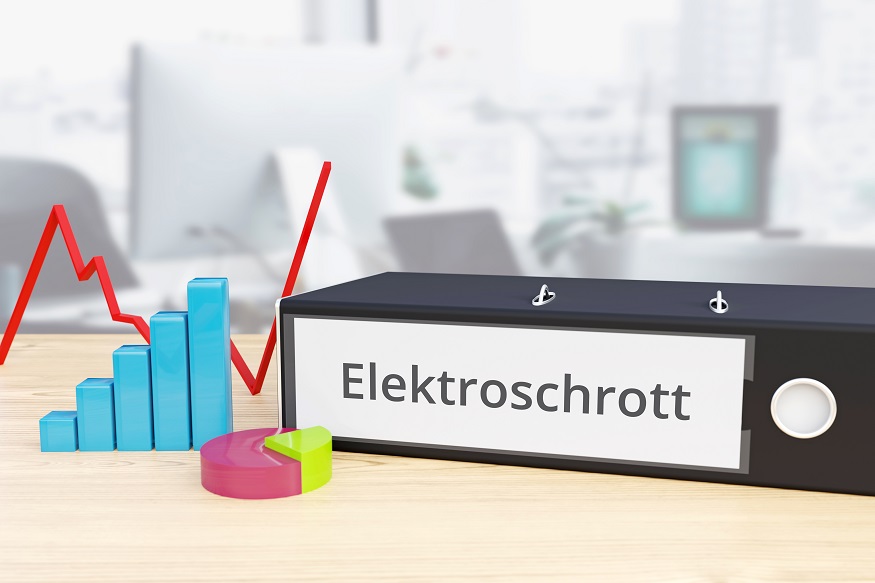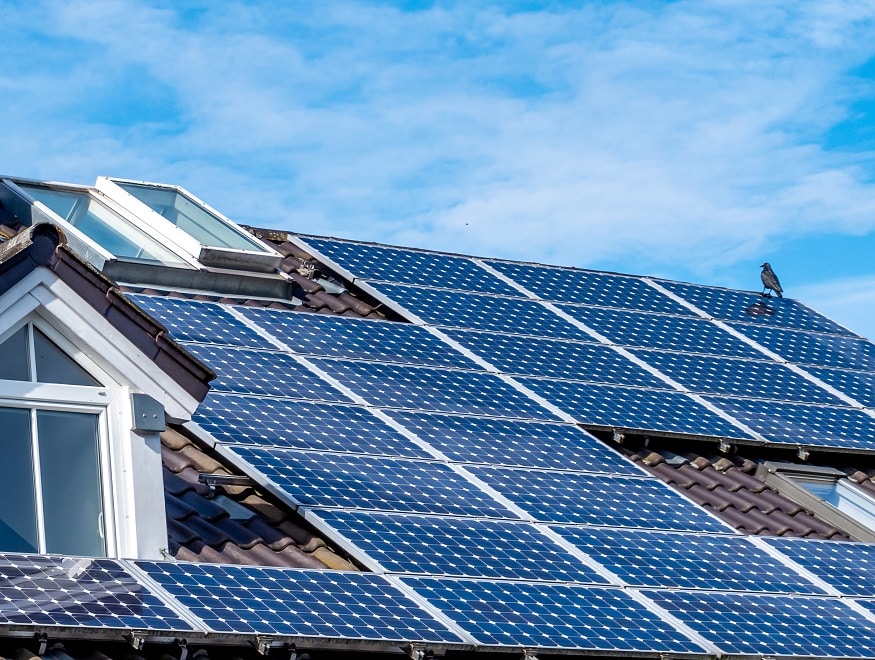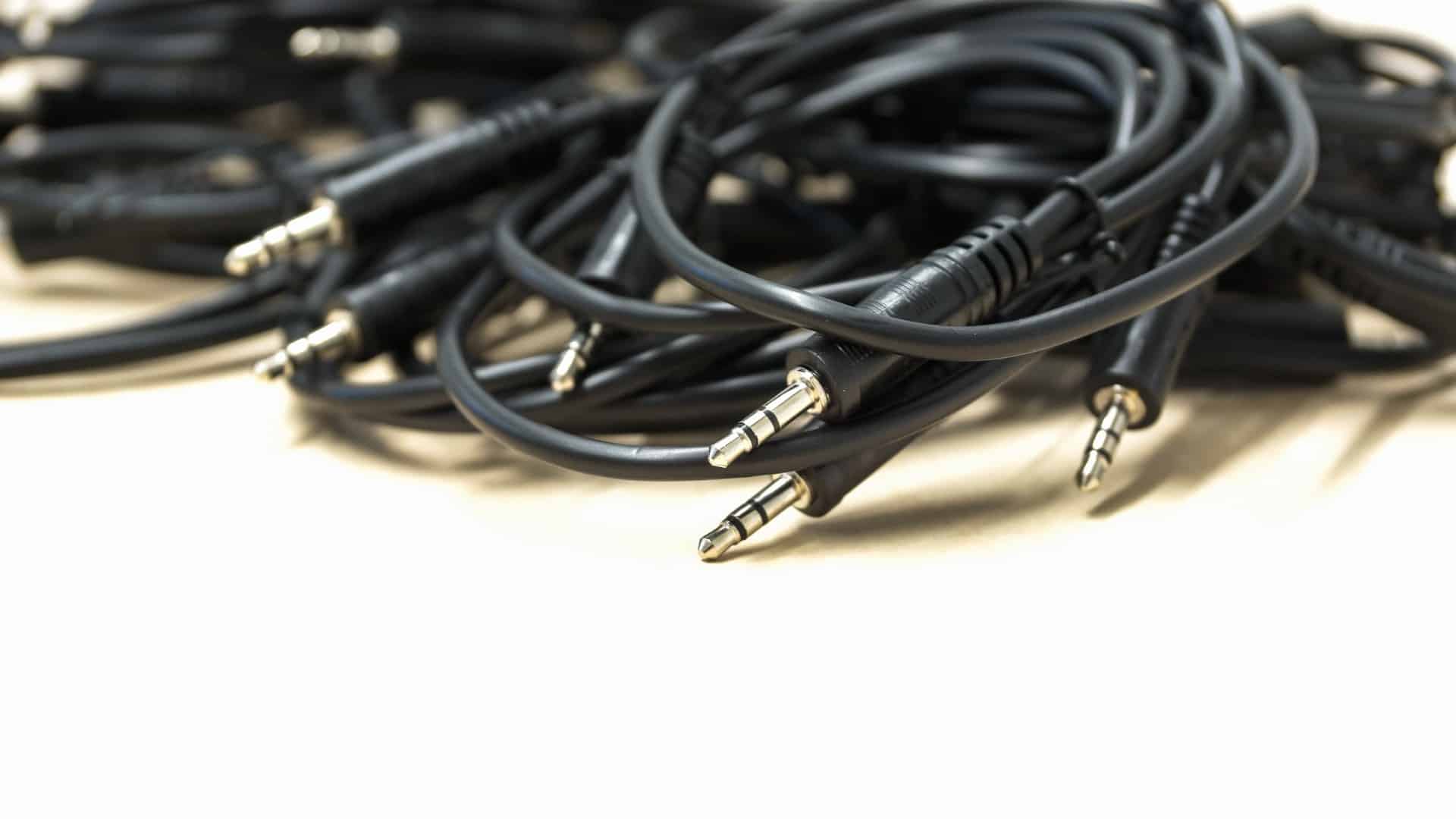Electronic waste in Germany
This is how much e-waste Germany produces each year
Around 1.9 million – that’s how many tons of electrical appliances were put into circulation in Germany in 2015 alone, with large household appliances such as refrigerators or washing machines leading the way (816. 664). For comparison: This corresponds to about a third of the cars produced in Germany in the same year (5.75 million). It’s no wonder that e-waste is currently one of the fastest growing waste streams worldwide and within the EU. Even electronic waste in Germany is a major burden. But how much old electrical equipment is actually disposed of in Germany?
In this article, you will find out whether Germany lives up to its title as “Recycling World Champion” when it comes to e-waste.
Electronic waste recycling Germany – once in figures
 While German consumers separate almost 80% of glass and plastic from other residual waste, the return rate for the disposal of electronic devices is rather sparse. In order to better measure the annual amounts of electronic waste in Germany and to be able to compare the figures with each other, statisticians divide the electronic waste produced in Germany into several categories:
While German consumers separate almost 80% of glass and plastic from other residual waste, the return rate for the disposal of electronic devices is rather sparse. In order to better measure the annual amounts of electronic waste in Germany and to be able to compare the figures with each other, statisticians divide the electronic waste produced in Germany into several categories:
- The number of products from market entry: This includes all products that were placed on the market in the corresponding period.
- The amount of discarded electronic equipment handed over to the official collection points.
- The percentage of WEEE collected that could actually be recycled or reused.
As you can see from most statistics in Germany, around 721,000t of electronic waste was properly returned to the collection points in Germany in 2015, of which almost 80% was recycled or reused. At around 623,000 tons, the majority of the electronic waste delivered in Germany came from private households. This amounts to around 7.6 kg of electronic waste in Germany per inhabitant per year. However, at the same time, another 1.9 million tons of electrical and electronic equipment came onto the market.
Figure 1: Electronic waste collected per capita and by country (2015)
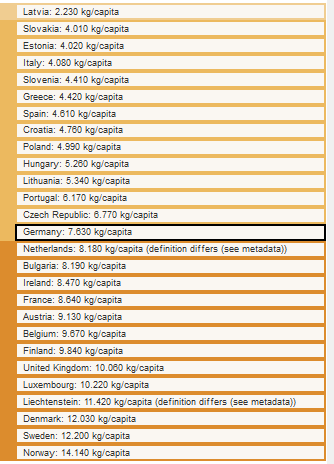
If you compare the values for electronic waste worldwide with other EU countries, it can be seen that the production of electronic waste in Germany is more or less in the middle.
Electronic waste worldwide – the country comparison
In Germany, compared to countries such as Italy or Malta, a relatively large proportion of the electrical devices previously brought onto the market are collected at the return points, but there is still plenty of room for improvement in terms of proper disposal, taking electronic waste recycling into account in Germany. as shown in the image below.
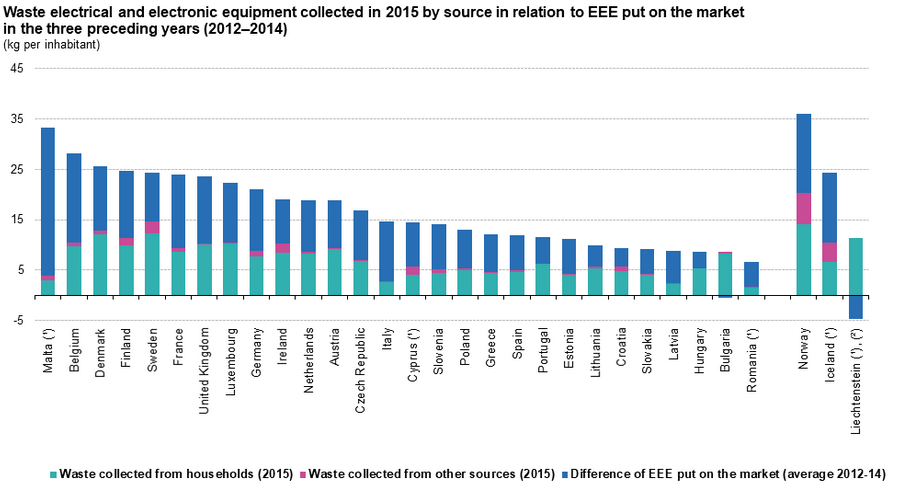
Turn old into new – why electronic scrap recycling is important in Germany
Unfortunately, it often happens that broken electronic devices are not repaired, but instead consumers decide to buy new ones and electronic waste is created in Germany. It is also not uncommon for old but still fully functional devices to be replaced. The reason for this is usually the desire for a newer, better or more modern device. What is now common practice with televisions and smartphones can have fatal consequences from an ecological point of view. Electronic waste in Germany and electronic waste in general worldwide contain not only numerous recyclable materials, but also a number of toxic and environmentally harmful substances. This makes e-waste a hazard worldwide.
For this reason, it is of enormous importance that the distributors of electrical devices are aware of their manufacturer responsibility within the meaning of the ElektroG (ElektroG) and ensure that the old devices are properly disposed of.
Deutsche Recycling GmbH can help you with this: Find out more now!

